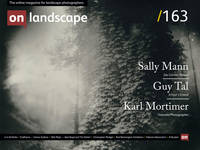Why is Wet Plate Photography so Popular?

Tim Parkin
Amateur Photographer who plays with big cameras and film when in between digital photographs.
The wet plate collodion process dates back to the middle of the 19th Century. During that period you had a couple of choices if you wanted to engage in that new-fangled photography thing. Firstly you could go French and produce an ultra sharp (and small) Daguerreotype, a one-off ‘print’ that couldn't be reproduced, or you could produce a much softer and textural salt print or calotype.
The ideal world, though, would be a combination of the sharpness of the Daguerreotype with the reproducibility of the salt print.
Around 1850, collodion was discovered, made by dissolving guncotton in ether and alcohol (which is why you should buy your collodion off the shelf instead of making it yourself). Collodion was the perfect support for photosensitive materials as it dries to a ‘skin’ which will stick to most materials, even glass.

